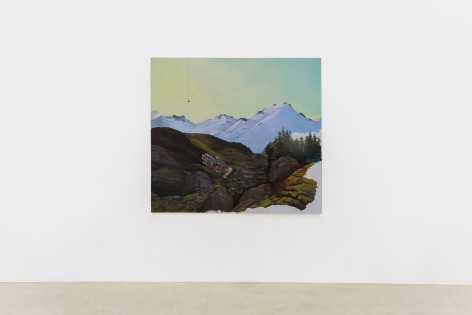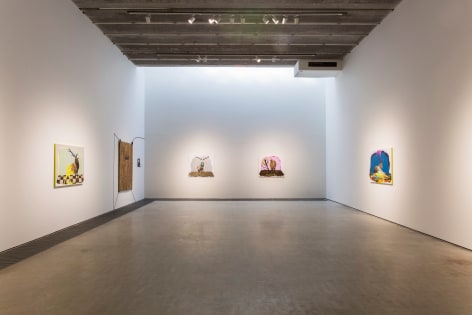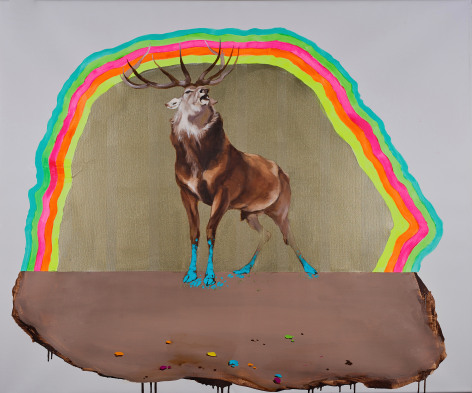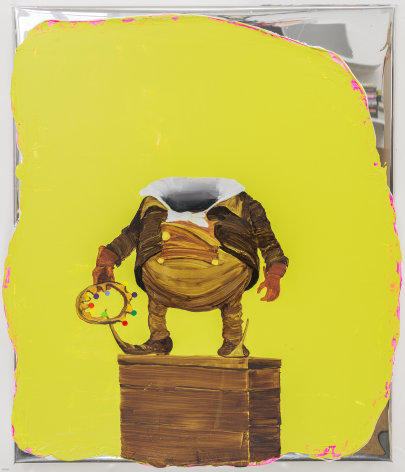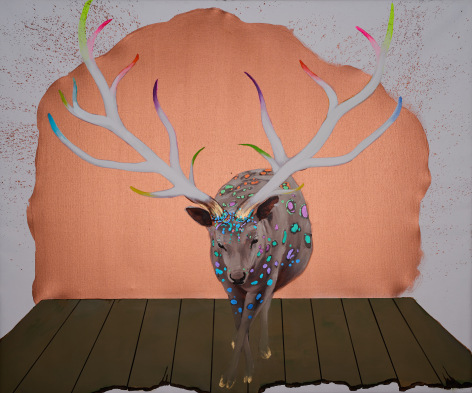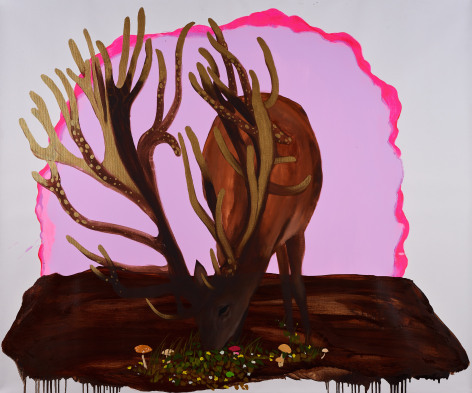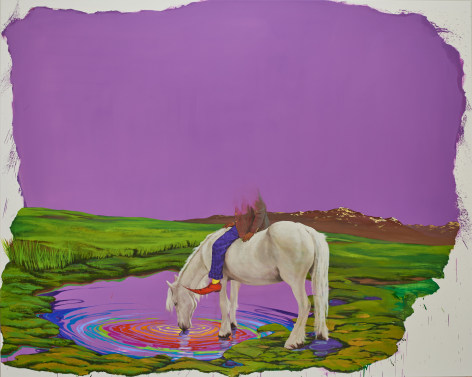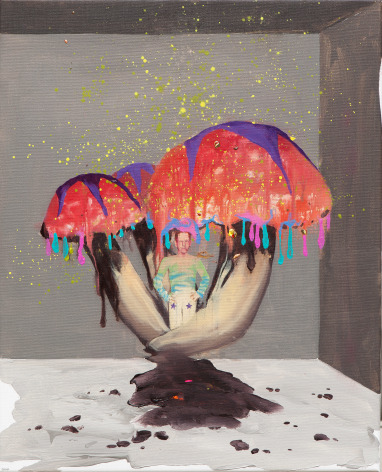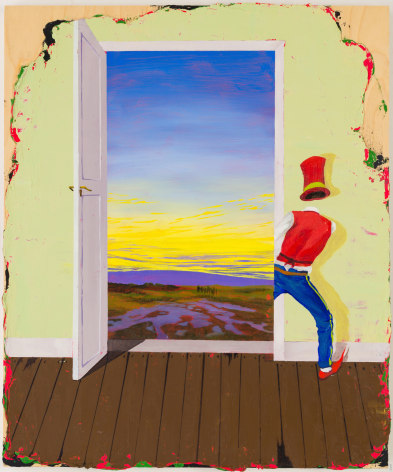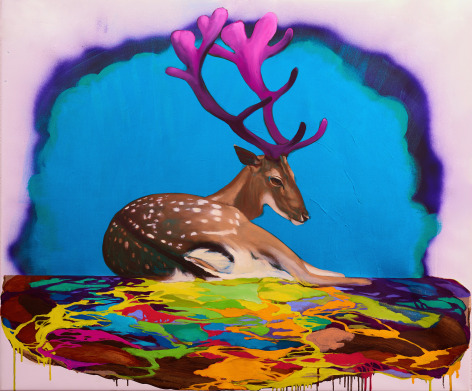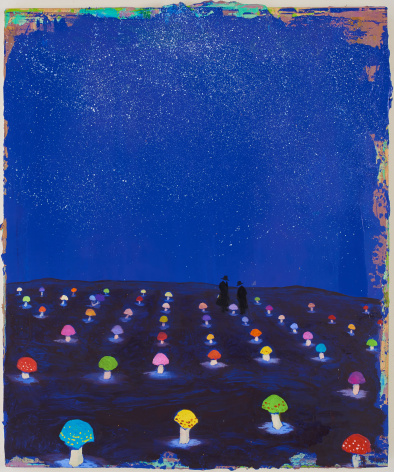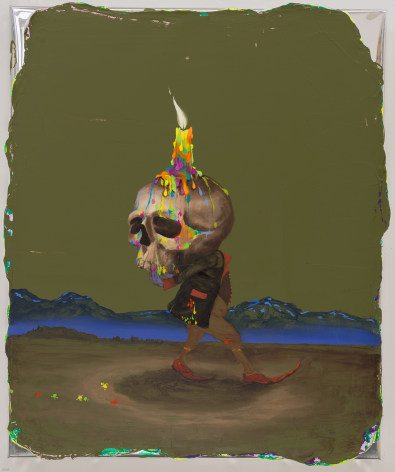Chambers Fine Art is pleased to announce the opening on February 18, 2017 of Fata Morgana: New Works by GAMA. This will be his second exhibition at the gallery. Born in Inner Mongolia in 1977, GAMA studied at the Central Academy of Fine Arts (CAFA) in Beijing from 1996 to 2000 before moving to Karlsruhe, Germany in 2002 where he studied painting at the Staatlichen Akademie der Bildenden Künste from 2002 to 2007 and was master student under Gustav Kluge from 2007 to 2008. He currently lives and works in Berlin.
The move from China to Germany was a transformative experience for GAMA as he was able to see first- hand works by European Old Masters and contemporary artists that he had previously seen only in reproductions. Gifted with a vivid imagination to which he had not yet been able to give visual expression, GAMA found that exposure to the work of many aspects of Germanic art from the Middle Ages to the nineteenth century Romanticism and the vigorous figurative characteristic of young artists associated with the Leipzig School enabled him to formulate an eccentric visual language that embraced both childhood memories and more recent fantasies.
GAMA’s formative years were spent in Inner Mongolia where his family lived a traditional nomadic existence and his aunt was an important shaman. Although suppressed during the period of Soviet domination, shamanism never really died out and GAMA was present on many occasions when his aunt entered into communion with the spirit world, one of the primary reasons being to identify the spirits responsible for physical ailments. On other occasions when she entered a trance, animal sounds would emerge from her mouth.
In Fata Morgana GAMA develops the hybrid style that characterized Idylls of the Kings while giving new prominence to representations of deer in the sequence of paintings titled Deer of Nine Color. From Sir Edwin Landseer’s Monarch of the Glen (1851) to Franz Marc’s Deer in the Forest (1914), artists have deer for a variety of symbolic purposes although always based on the appearance and behavior of actual animals. GAMA’s deer, in contrast, are inspired by the deer that his aunt encountered guarding the doors that separate the actual world from the spirit world. She informed him that these deer act as guardians of the world beyond and that she could only gain admittance through the exchange of a secret code. Endowed with massive antlers, each deer has a different qi indicated by multiple signs including jewel-like colored patches and mushrooms growing out of the animal’s fur.
Once permitted entry through the doors guarded by the deer, the shaman speaks of seeing mirages that only she is permitted to see. In choosing Fata Morgana as title of the exhibition GAMA underscores the highly individual melding of cultural and visual references that characterize his visual language. Fata morgana are fleeting mirages caused by the relationship between layers of cool and warm air, named after a powerful sorceress in the Arthurian legends. GAMA’s unsettling paintings with their multiple visual inconsistencies such the encounter between armed soldiers and a multi-colored glove in Tal (Valley) III or the visual inconsistencies of Das Tor (The Door) III have many characteristics in common with these fleeting visions.
In his paintings GAMA has always downplayed illusionism by drawing attention to their physical qualities, allowing oil paint to accumulate around the edges of irregularly shaped areas that look as if they could be peeled off the surface of the canvas. A naively painted light fixture frequently interrupts an expanse of sky and many of his homunculi dissolve into nothingness. His new paintings develop these ideas as he seeks analogies between childhood memories of Inner Mongolia and the world of fantasy so richly explored in the country where he has chosen to live.


